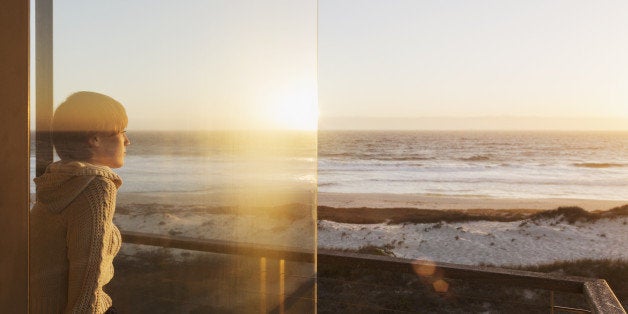
As it happens, I live on the edge of a vast underwater canyon: the Monterey Canyon. And while I understand its importance from a marine ecosystem perspective, I never thought much about where in the world similar canyons exist or whether they are protected, like my valued California one is. In fact, I only had a vague idea of where the Bering Sea was, not to mention that there are underwater canyons there -- until recently.
So in case you're as in the dark as the sea creatures at the bottom of said canyons are (and I was), here's a quick primer: the Bering Sea spans nearly 800,000 square miles between Alaska and Siberia and is among one of the wildest regions in the world. As it turns out, nearly 60 percent of our annual catch here in the U.S. comes from the Bering Sea.
There are five canyons carved into the slope of the Bering Sea. Because of the depth of these canyons and how currents and rising seawater interact with their topography, they're so teeming with ocean life that the area has come to be known as the Green Belt.
So, why should you care?
The most-fished fish (say that five times, real fast!) in the United States is Alaska pollock, a flaky white fish used for fish sticks and more, and the majority of it comes from -- you guessed it -- the Bering Sea, including the canyons. The main way pollock is caught is via trawling, which, according to NOAA, may be impacting deep-water coral and sponge habitats in the Bering Sea Canyons. Corals are known to be important habitats for fish, including acting as "nurseries" for juveniles, and are understood to be sensitive and rare ecosystems that should be protected.
But, as of this writing, they're not. Why? Because fishery managers wanted more studies before deciding whether they should do anything differently.
We know that Alaska pollock is the largest catch in the nation. We also know that, to protect not only the Bering Sea Canyons themselves, but also our country's largest fishery and its long-term viability, it may be necessary to close some or all of the canyons and the Green Belt to fishing. Preserving complex ecosystems that support productive fisheries like this one is vital to the long-term goal of maintaining and expanding sustainable seafood production.
I've worked in the food industry for more than 20 years, but I'm no expert on ocean conservation or even on seafood. That said, it doesn't take an expert to know that, if we wait until we have 100 percent certainty that a) the canyons are being negatively affected and b) we should have a moratorium on detrimental fishing practices to preserve them and the fisheries based there, the damage will already be done. There may be nothing left to protect.
Also, I believe wholeheartedly in being a good corporate citizen, and with that belief comes a responsibility not to just throw up my hands and say, "The experts can fight it out!" Based on the research I was able to do -- and on common sense -- I decided to take action.
I sent a letter to our seafood suppliers asking them not to wait until protections are established based on further study (which is stalled, as of this writing). I've asked them to move on this issue as soon as possible by agreeing to halt fishing in the Bering Sea Canyons. I am still waiting for an answer.
In the meantime, I have also signed onto Greenpeace's Protect the Bering Sea campaign. Over 200,000 people -- including executives with Costco, Hy-Vee, and Trader Joe's and numerous other major seafood buyers -- have also done so in the hopes that, until the Canyons receive full protection, at least we can prevent any further damage from being done.
If you agree it's better to be safe than sorry when it comes to the Canyons, please join me in signing.
